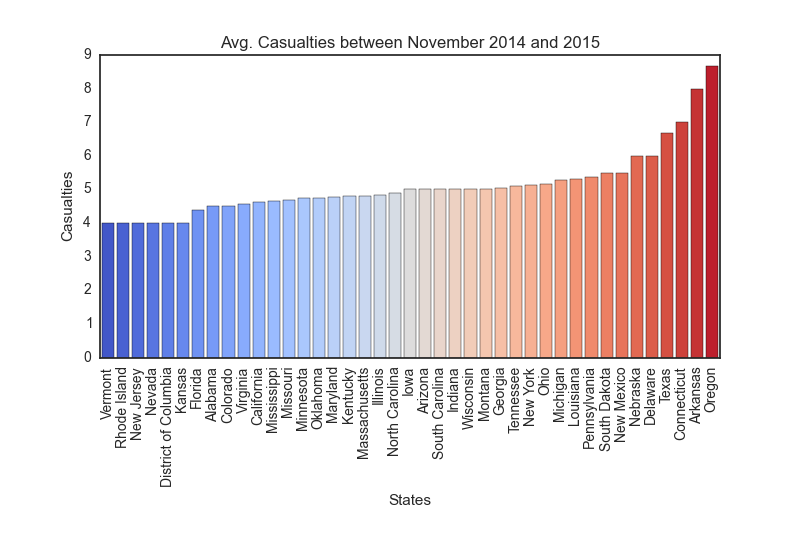This post is not about finance or law, but about mass shootings.
Mass Shooting: “FOUR or more shot and/or killed in a single event [incident], at the same general time and location not including the shooter.” (Source: GVA)
Roseburg, Oregon
October 1, 2015, marks another incident of mass shooting in the United States. This time, it was Christopher Sean Harper-Mercer, a student at Umpqua Community College who killed 9 people after asking them if they were Christians. The police found 13 firearms connected to the shooter, all legally obtained via a federally licensed arms dealer.
Mass Shootings in the U.S.
The Gun Violence Archive (GVA) is an online, not for profit organization that uses third-party sources to produce gun violence statistics. The organization provides public access to a part of their dataset, including mass shootings between November 21, 2014 and October 2, 2015. GVA defines mass shooting as “FOUR or more shot and/or killed in a single event [incident], at the same general time and location not including the shooter.” Using Python, PANDAS and Matplotlib, analyzing the numbers of casualties (persons killed or injured) is straightforward.
Aggregated mass shooting statistics

California, New York and Illinois top the list of total casualties per state. Looking at the total number of casualties per month during this period shows an unsettling, rising trend:

Finally, there is a significant difference between the number of casualties per individual incident (medians: 1 fatality, 4 injured) and the average number of casualties per state, indicating the existence of incidents with many casualties. The Oregon shooting of Thursday is one example:
